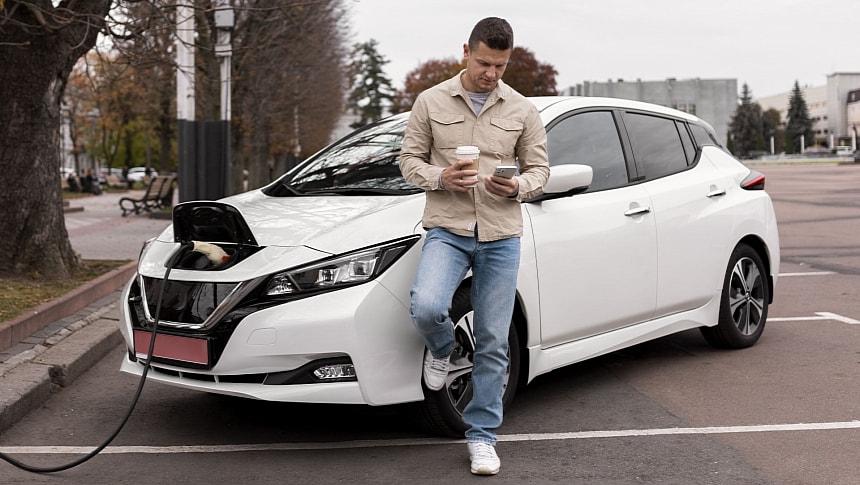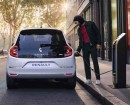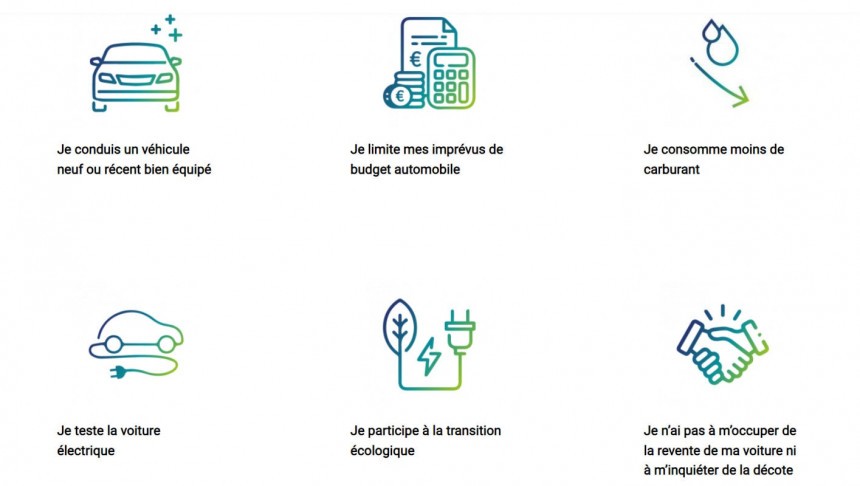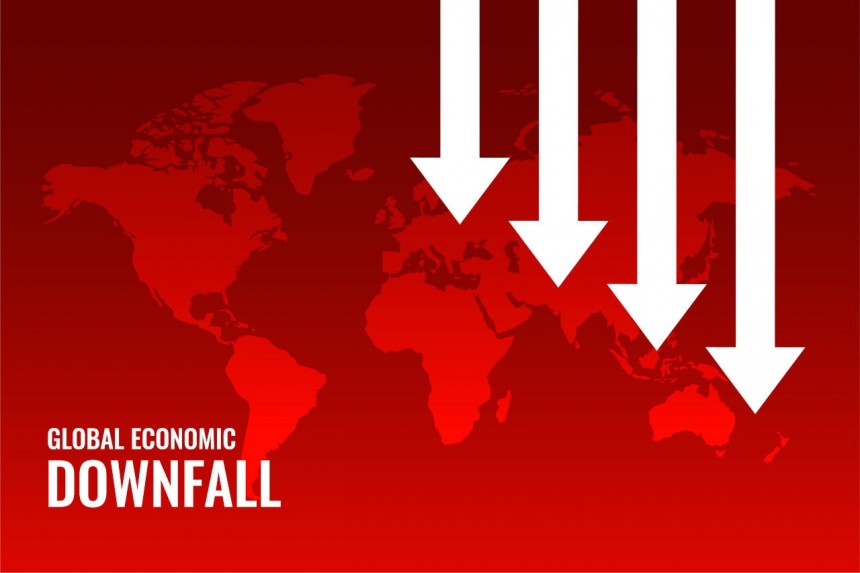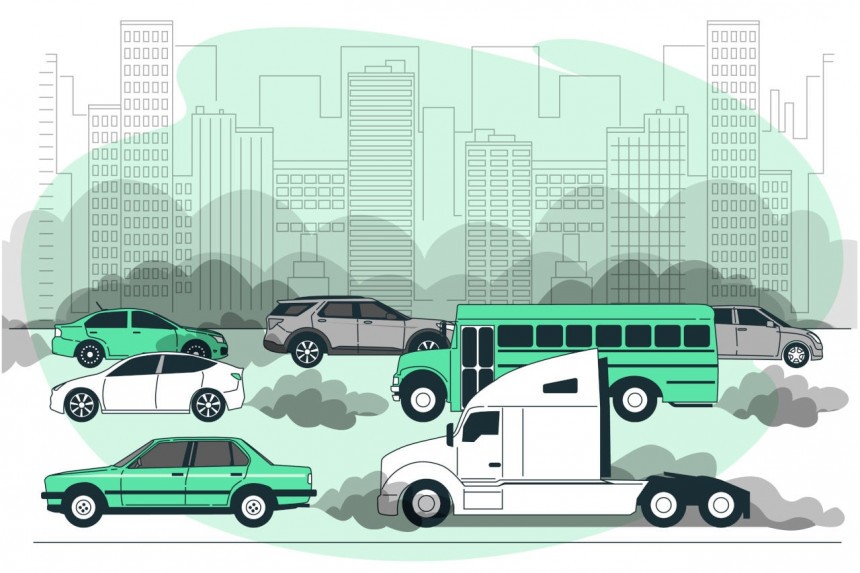Everybody's talking these days about EV sales cooling down. Some even predict an EV market crash, ignoring the hundreds of billions of dollars invested by the industry in battery technology and the fast pace of improvements. While it's true that the rate of EV adoption is well below expectations, I think policymakers can learn an important lesson from France's recent experience.
Just around Valentine's Day, I'm sure you noticed some headlines in the mass media or social media stating that the French government suspended / halted / ditched an EV leasing scheme due to too-high demand.
Of course, using those pessimistic terms ("suspend," "halt," "ditch," and so on) surely created subliminally the idea that it was an error. It only adds to all sorts of bad news about the EV world lately, so I wouldn't blame you for believing all that nonsense about the demise of electric cars.
Previous strategies consisted of subsidizing the cost of gasoline or diesel needed for such low-income drivers, most of them using very old and polluting cars. Keep in mind that France was for a long time the most diesel-friendly country in the EU, as it used to heavily encourage the usage of diesel cars because of their lower CO2 emissions level compared to similar gasoline cars.
In the meantime, the "Dieselgate" proved that the CO2 emissions advantage was just a marketing stunt and that diesel cars are far worse for the air we breathe in the cities than we knew. France is also committed to bold decarbonization goals, and electrification is the best bet as the country relies heavily on electricity produced by nuclear plants.
Well, the genius of this "social leasing" program was that instead of subsidizing the fuel (which doesn't cut pollution), the government decided to subsidize the leasing of an electric car (thus replacing a polluting vehicle altogether!).
And get this: the monthly leasing fee was just €100 / $110 for regular EVs and €150 / $160 at most for larger family EVs. Whoa, shut up and take my money! Sorry, but there was a catch: the program was meant only for French residents with a household taxable income of less than €15,400 / $16,700 a person.
In 2024, the minimum wage in France is €1,766.92 / $1,918 gross per month, which leads to a yearly income of more than €21,000 / $22,800 per person. So, a family of two earning each the minimum wage and having at least one kid was clearly eligible for the program.
Also, applicants had to live at least 15 km / 9 miles away from the place of work, and their commute amounted to at least 8,000 km / 5,000 miles a year. The cars eligible for this "social leasing" had to cost less than €47,000 / $51,000 and to weigh less than 2,400 kg / 5,300 pounds.
Used EVs or converted cars were also accepted, as long as the first register was at most three years and a half old. Oh, and there was a very clear red line: the cars had to be European-built, which meant no more worries about those menacing Chinese cheap electric cars…
Still, the initial quota of this program considered only 25,000 applicants, which is less than 0.1% of the more than 30 million officially employed persons in France. The government allocated €1.5 billion / $1.63 billion for 2024, probably based on the public's reluctance vis-à-vis electric cars.
Well, the government was wrong because the number of applications exceeded 90,000 by the end of January – more than four-fold initial estimations! So long with "in real life, people don't want EVs," huh?
The thing with governmental expenses is that they can't be increased limitlessly. Still, the Minister was given the green light to double the budget allocated so that 50,000 applicants could benefit from this program. But that was it. With no more money available for the 2024 fiscal year, the program had to be paused.
This wasn't a flop itself, as many headlines seemed to emphasize. In fact, it's quite the opposite: the program proved more popular than expected despite the anti-EV movement, the current economic conundrum, and the European car industry struggle.
Besides, the excellent news is that this year, 50,000 old and polluting cars will be replaced by zero-tailpipe-emission electric vehicles. This is 15% of the almost 330.000 EVs sold in France last year. And one more thing.
These cars will be driven by people who couldn't afford an EV otherwise. Popular wisdom tends to favor an extremist anti-EV stance because electric cars are higher-priced compared to ICE vehicles, especially when you compare a new Tesla Model 3 to a 10- or 15-year old VW Passat…
But now, people who would spend at least a hundred euros to fill the tank monthly will pay that amount to enjoy a modern electric car, while the cost of use will be much lower than a comparable ICE car. Some producers even presented models with monthly leasing fees of just €40 / $43, which basically means owning an EV like Renault Twingo E-Tech almost for free…
The program will be available again in 2025, and I expect 2024's experience to help EV adoption. And it may spawn some programs meant for the average-income employees who make the most of regular car sales in Europe.
On the other hand, taxing the fuel for the actual harm it does to our environment and health is unthinkable: can you imagine the gasoline price increasing two or threefold overnight? Or even tenfold? Of course not. The economy would collapse, along with our society. Just like in a nuclear war scenario.
In the meantime, global warming is unstoppable, while the pace of climate change is accelerating. We really need to decarbonize transportation as fast as possible, but it seems we're stuck in this lose-lose scenario. Unless…
In the French "social leasing" case, the government must pay the dealers the initial deposit of up to €13,000 / $14,100. It's much more than the €5,000 / $5,400 subsidy available for the rest of EV customers. The budget for the 50,000 applicants in this program is €650 million / $705 million – a lot, I know.
But try to imagine the impact 50,000 old and dirty cars have on the air and the environment because their engines burn oil-based gasoline and diesel for several tens of kilometers daily, emitting tons of harmful pollutants.
Unfortunately, there's still no universally agreed way to quantify the cost tailpipe emissions have on society, apart from some estimations regarding premature deaths, which can translate to some economic impact.
Generally, cars are taxed on the CO2 emissions they produce every kilometer; car makers are subjected to penalties for the fleet they sell based on a specific CO2/km value; there is a carbon market pricing the CO2 emissions – for instance, BloomberhNEF expects an average of €71 / $76 per ton this year in the EU.
However, no such scheme exists for tailpipe pollutants like NOx, HC, CO, or particulate matter. For these menacing chemical compounds, only the Euro norms stipulate limits. In actual drive usage, old ICE cars greatly exceed those limits, and the toll on air quality is much heavier than any conservatory estimations, like those of the International Health Organisation.
In France, the Crit'Air emissions classification system has six levels. The Crit'Air 3, 4, 5, and 6 comprise, at most, Euro 4 vehicles, around 13 million or a third of the total registered cars in France. Obviously, those 50,000 applicants for the "social leasing" drive old cars from these categories.
I'll try a math exercise based on the assumption that these 50,000 polluting cars are used daily for a 30 km / 18 miles commute. According to the Euro 1, 2, 3, and 4 limits, this fleet would produce a daily average of around 75 kg of particulate matter, 840 kg of HC+NOx, and one ton of CO (don't mistake it for CO2).
In a year, they would be responsible for 600-700 tons of such nasty pollutants, causing all kinds of cancer, respiratory diseases, and other serious health issues. In three years – the minimum period imposed for the "social leasing" – we're talking about 1,800 to 2,100 tons released mainly into the air inside the cities.
Now, do you think that €650 million / $705 million budget for the "social leasing" is too expensive? It means €325 / $352 per kilogram. Which is several times less costly than medical expenses associated with health issues caused by those nasty pollutants.
But when you have the chance to spend less on an EV than what you do on fuel for an ICE car monthly, I think the choice is obvious. Especially for this segment of the population who can only afford a car for less or much less than €10,000 / $10,800 and has no benefit of the subsidy for a brand new EV costing several times more.
The" social leasing" is also an efficient way to remove the most polluting cars off the streets. All over Europe, national fleets are becoming older as people keep their cars longer. The average age of vehicles in the EU is now 12; in the US, it's already nearing 13 years old.
An older car only emits more pollutants over time, period. So, frankly, making electric cars hilariously affordable is the most effective way to lure customers, despite any other issues related to range and charging.
Is it efficient, though, from a budgetary perspective? Well, that's a question the politicians, the industry, and the policymakers should answer, putting things in context: pollution has a very high cost, but society hasn't quantified it properly yet.
The good news is that other EU countries could soon follow France's "social leasing" example. In the meantime, non-Chinese carmakers are ready for more affordable EVs, around €20-25,000 / $21-27,000.
At least in cities and nearby areas, the EV adoption rate could accelerate thanks to these kinds of "social leasing" programs. After all, the air we and our children breathe in the urban areas where we live is priceless. Frankly, this is the basis for any debate related to ICE car pollution and EV subsidies.
Of course, using those pessimistic terms ("suspend," "halt," "ditch," and so on) surely created subliminally the idea that it was an error. It only adds to all sorts of bad news about the EV world lately, so I wouldn't blame you for believing all that nonsense about the demise of electric cars.
What is this "French social leasing" program all about?
In October 2023, the French Ministry of Ecological Transition and Territorial Cohesion announced the launch of an ambitious program aimed at low-income drivers who must rely on a vehicle to travel to work because public transport is not an option.Previous strategies consisted of subsidizing the cost of gasoline or diesel needed for such low-income drivers, most of them using very old and polluting cars. Keep in mind that France was for a long time the most diesel-friendly country in the EU, as it used to heavily encourage the usage of diesel cars because of their lower CO2 emissions level compared to similar gasoline cars.
In the meantime, the "Dieselgate" proved that the CO2 emissions advantage was just a marketing stunt and that diesel cars are far worse for the air we breathe in the cities than we knew. France is also committed to bold decarbonization goals, and electrification is the best bet as the country relies heavily on electricity produced by nuclear plants.
And get this: the monthly leasing fee was just €100 / $110 for regular EVs and €150 / $160 at most for larger family EVs. Whoa, shut up and take my money! Sorry, but there was a catch: the program was meant only for French residents with a household taxable income of less than €15,400 / $16,700 a person.
In 2024, the minimum wage in France is €1,766.92 / $1,918 gross per month, which leads to a yearly income of more than €21,000 / $22,800 per person. So, a family of two earning each the minimum wage and having at least one kid was clearly eligible for the program.
Also, applicants had to live at least 15 km / 9 miles away from the place of work, and their commute amounted to at least 8,000 km / 5,000 miles a year. The cars eligible for this "social leasing" had to cost less than €47,000 / $51,000 and to weigh less than 2,400 kg / 5,300 pounds.
Used EVs or converted cars were also accepted, as long as the first register was at most three years and a half old. Oh, and there was a very clear red line: the cars had to be European-built, which meant no more worries about those menacing Chinese cheap electric cars…
The cause of the so-called flop
France has a population of over 67 million people, and many of those who have a job are regular commuters living in cities' suburbs tens of kilometers away from their place of work or even in villages a couple of hundred kilometers away.Still, the initial quota of this program considered only 25,000 applicants, which is less than 0.1% of the more than 30 million officially employed persons in France. The government allocated €1.5 billion / $1.63 billion for 2024, probably based on the public's reluctance vis-à-vis electric cars.
Well, the government was wrong because the number of applications exceeded 90,000 by the end of January – more than four-fold initial estimations! So long with "in real life, people don't want EVs," huh?
This wasn't a flop itself, as many headlines seemed to emphasize. In fact, it's quite the opposite: the program proved more popular than expected despite the anti-EV movement, the current economic conundrum, and the European car industry struggle.
Besides, the excellent news is that this year, 50,000 old and polluting cars will be replaced by zero-tailpipe-emission electric vehicles. This is 15% of the almost 330.000 EVs sold in France last year. And one more thing.
These cars will be driven by people who couldn't afford an EV otherwise. Popular wisdom tends to favor an extremist anti-EV stance because electric cars are higher-priced compared to ICE vehicles, especially when you compare a new Tesla Model 3 to a 10- or 15-year old VW Passat…
But now, people who would spend at least a hundred euros to fill the tank monthly will pay that amount to enjoy a modern electric car, while the cost of use will be much lower than a comparable ICE car. Some producers even presented models with monthly leasing fees of just €40 / $43, which basically means owning an EV like Renault Twingo E-Tech almost for free…
"Social leasing" seems very expensive for the government, but…
Germany suddenly phasing out EV subsidies in December 2023 was a nightmare car makers feared for a long time. They helped narrow the price gap to similar ICE cars, but the burden on national budgets is unsustainable in the long term, even for developed Western economies.On the other hand, taxing the fuel for the actual harm it does to our environment and health is unthinkable: can you imagine the gasoline price increasing two or threefold overnight? Or even tenfold? Of course not. The economy would collapse, along with our society. Just like in a nuclear war scenario.
In the meantime, global warming is unstoppable, while the pace of climate change is accelerating. We really need to decarbonize transportation as fast as possible, but it seems we're stuck in this lose-lose scenario. Unless…
But try to imagine the impact 50,000 old and dirty cars have on the air and the environment because their engines burn oil-based gasoline and diesel for several tens of kilometers daily, emitting tons of harmful pollutants.
Unfortunately, there's still no universally agreed way to quantify the cost tailpipe emissions have on society, apart from some estimations regarding premature deaths, which can translate to some economic impact.
Generally, cars are taxed on the CO2 emissions they produce every kilometer; car makers are subjected to penalties for the fleet they sell based on a specific CO2/km value; there is a carbon market pricing the CO2 emissions – for instance, BloomberhNEF expects an average of €71 / $76 per ton this year in the EU.
However, no such scheme exists for tailpipe pollutants like NOx, HC, CO, or particulate matter. For these menacing chemical compounds, only the Euro norms stipulate limits. In actual drive usage, old ICE cars greatly exceed those limits, and the toll on air quality is much heavier than any conservatory estimations, like those of the International Health Organisation.
I'll try a math exercise based on the assumption that these 50,000 polluting cars are used daily for a 30 km / 18 miles commute. According to the Euro 1, 2, 3, and 4 limits, this fleet would produce a daily average of around 75 kg of particulate matter, 840 kg of HC+NOx, and one ton of CO (don't mistake it for CO2).
In a year, they would be responsible for 600-700 tons of such nasty pollutants, causing all kinds of cancer, respiratory diseases, and other serious health issues. In three years – the minimum period imposed for the "social leasing" – we're talking about 1,800 to 2,100 tons released mainly into the air inside the cities.
Now, do you think that €650 million / $705 million budget for the "social leasing" is too expensive? It means €325 / $352 per kilogram. Which is several times less costly than medical expenses associated with health issues caused by those nasty pollutants.
The only real question: how costly is car pollution?
Don't take my calculations for granted; they are just an exercise meant to give you an idea of the big picture. Which, frankly, has been quite grim lately regarding the public's "appétit" for electric vehicles. As I stated in another piece, range and charging issues will still be a barrier for most customers despite a price parity to similar ICE vehicles.But when you have the chance to spend less on an EV than what you do on fuel for an ICE car monthly, I think the choice is obvious. Especially for this segment of the population who can only afford a car for less or much less than €10,000 / $10,800 and has no benefit of the subsidy for a brand new EV costing several times more.
An older car only emits more pollutants over time, period. So, frankly, making electric cars hilariously affordable is the most effective way to lure customers, despite any other issues related to range and charging.
Is it efficient, though, from a budgetary perspective? Well, that's a question the politicians, the industry, and the policymakers should answer, putting things in context: pollution has a very high cost, but society hasn't quantified it properly yet.
The good news is that other EU countries could soon follow France's "social leasing" example. In the meantime, non-Chinese carmakers are ready for more affordable EVs, around €20-25,000 / $21-27,000.
At least in cities and nearby areas, the EV adoption rate could accelerate thanks to these kinds of "social leasing" programs. After all, the air we and our children breathe in the urban areas where we live is priceless. Frankly, this is the basis for any debate related to ICE car pollution and EV subsidies.
